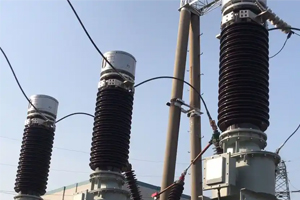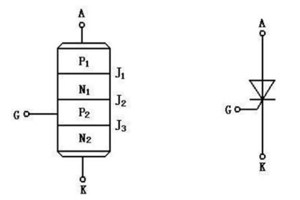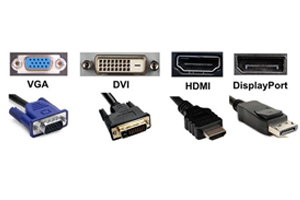Amplifier Classes in Detail: Understanding Class A to Class D
Author:admin Date: 2025-10-17 06:45 Views:108
Introduction
Amplifier classes are simply how you would categorize the amplifiers depending on their signal linearity and efficiency. That is why you can come across options such as class A, B, D, and many others. It all depends on how they work.
This guide provides a detailed look at amplifier classes so you can choose the right one for your application. But first, how do amplifiers work?
How Amplifiers Work
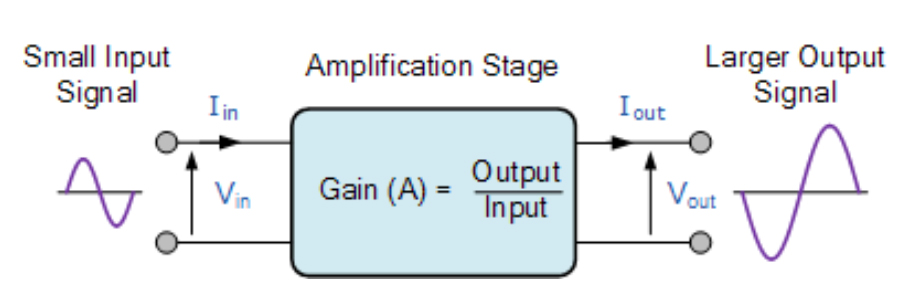
Whether it is a class AB amplifier or a class D amplifier, the basic operating principle is the same. So, an amplifier uses external power to create a high-power output signal. The output signal is the larger version of the input signal.
Major Amplifier Classes
You will come across several amplifier classes. This includes Class A, Class B, Class AB, and Class D amplifiers. The other options, though not common, include classes G, H, and T.
Class A Amplifiers
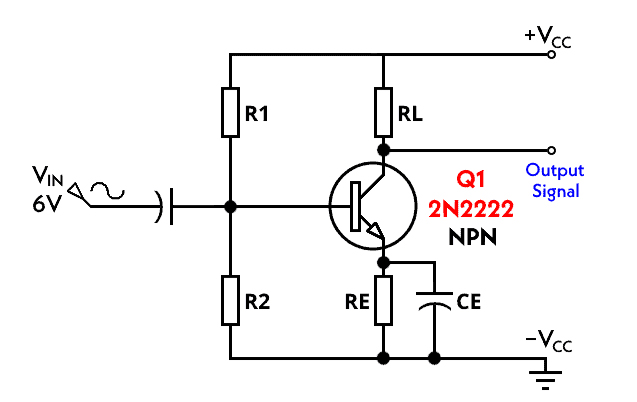
The output transistors in these amplifiers are always switched on, even when there is no audio signal. They also conduct current throughout the entire 360 degrees of an input waveform.
The output device is designed to operate in the linear region. This ensures you can maintain a continuous, monotic relationship between the input and output signals. This feature is vital to minimize distortion.
Pros
- The design delivers superior sound quality by operating in the linear region, resulting in very low distortion and a clean, natural sound.
- The simple design makes it easy to predict its behaviour and improve it, compared to the more complex amplifier classes.
Cons
- Low efficiency is one of the biggest downsides of a class A amplifier. You are looking at a maximum efficiency of 24% for typical configurations.
- Since the transistors are always on, even with no signal, they dissipate a lot of power as heat.
- High power consumption also makes them expensive to run. They consume the same amount of power whether they are playing music or sitting idle.
- They are also large in size so that they can dissipate heat. The result is bulky and expensive amplifiers.
Common Uses
- Class A amplifiers are common in audiophile setups. This is where having sound fidelity is vital than the other potential drawbacks.
- Studio monitors are also a good example of this amplifier class. They are essential to get accurate audio mixing and mastering.
Class B Amplifiers
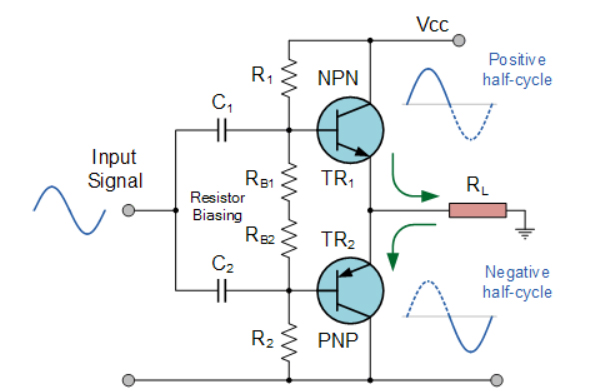
For the class B amplifiers, you have a pair of transistors with one working on the positive part of the audio signal while the other handles the negative portion. This is also called the push-pulling technique. This is where one transistor pushes the current to the load while the other transistor pulls the current from the load.
Unlike in a class A amplifier, where the transistors are always on, there is no idle current here. When there is no input signal, the transistors are off.
Pros
- Offers a higher efficiency than what class A offers. The theoretical maximum efficiency in this class is 78.6%.
- There is negligible power loss. This means there is no power consumed when there is no input signal.
- The reduced harmonic distortion also means it delivers a high-quality output signal
- The push-and-pull circuits are smaller and lighter. The result is that the Class B amplifier will be less expensive.
Cons
- Crossover distortion is experienced in regions where the signal crosses zero volts. This is where one transistor turns off while the other turns on.
- Distortion levels can be high if left uncorrected.
Common Uses
- Audio equipment such as home audio systems, professional audio gear, and musical instruments
- RF power amplifiers used in radio frequency applications
Class AB Amplifiers
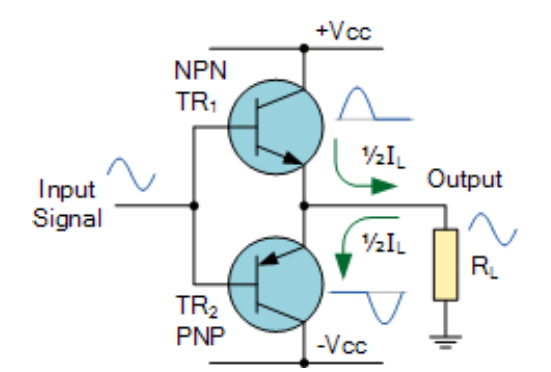
The Class AB amplifiers merge the sound quality of Class A with the best power efficiency of Class B. This means having the best of both class amplifiers combined into one. The result is having amplifiers good for applications that need a balance between performance and efficiency. Examples include home audio systems, musical instruments, and car amplifiers.
At low power levels, it will operate in Class A mode. The result is a clean and low-distortion sound. For high power levels, the amplifier transitions to Class B operation to improve efficiency.
In this class, the crossover distortion found in Class B amplifiers is eliminated. You would also achieve slightly higher efficiency than with a class A amplifier.
Pros
- Since you can eliminate crossover distortion, expect better sound quality in this type of amplifier class.
- Class AB amplifiers also offer more efficiency than class A amplifiers. Its efficiency ranges from 60 to 70%.
Cons
- The efficiency is still not the best. It may also need larger heat sinks to keep it cool
- It is more complex to design, which makes it more expensive
- The amplifier class is more sensitive to temperature changes, which need to be compensated for.
Common Uses
- Musical instruments such as bass amplifiers, professional guitars designed for higher output power
- Car amplifiers are used in car audio setups where efficiency is important
- Home audio and home theater systems, where you need a balance of sound quality and power efficiency
Class D Amplifier
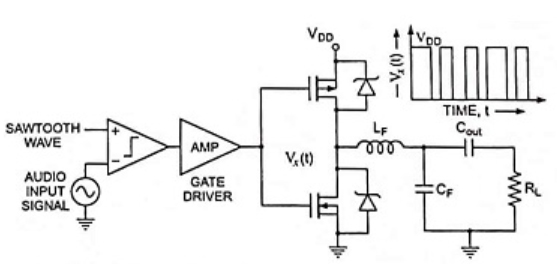
Class D amplifiers use pulse-width modulation (PWM) for converting the analog audio signal into a series of on and off pulses. This allows them to be amplified with high efficiency.
The PWM signal will consist of a series of square waves with a fixed frequency and amplitude. However, the width of each pulse varies depending on the amplitude of the original analog signal.
In the output stage, the amplifier switches the power to the speakers in regard to the on and off pulses. Since the transistors are either fully on or fully off, they will be more efficient in terms of power use.
A low-pass filter can be placed at the output to average the pulses back into a smooth analog signal. It also removes high-frequency switching noise before the signal reaches the speakers.
Pros
- Expect high efficiency since the switching transistors are either fully on or off. The result is that power dissipation is very low and efficiency can exceed 90%.
- It is possible to achieve a compact design, as it does not require large power supplies or heat sinks to work effectively.
- Lower power dissipation also leads to less energy waste and lower power consumption as well.
Cons
- The output PWM signal has a series of pulses which need filtering. That is why a low-pass filter is used to remove the switching noise.
- The PWM process can lead to issues such as nonlinearity. As such, it is important to have it carefully controlled.
Amplifier Classes Compared
Amplifier classes differ a lot in terms of how they work. Below is a table giving you a comparison between these classes.
| Feature | Class A | Class B | Class AB | Class D |
| Conduction Angle | Full signal cycle (360 degrees) | Half cycle each (180 degrees per transistor) | Between 180 to 360 degrees | Uses pulse-width modulation |
| Operating type | Continuous conduction | Pull-pull method | Combines A and B operations | High-speed switching |
| Efficiency | Very low at around 30% | Moderate | Good | Excellent |
| Power consumption | Very high | Moderate | Moderate | Very low |
| Heat generation | Very high | Moderate | Moderate to low | Very low |
| Sound quality | Excellent | Lower | High | Very good |
| Distortion level | Lowest | High( At crossover point) | Low | Low to moderate |
| Size and Weight | Large and heavy | Medium | Medium | Compact and lightweight |
Heat Management and Power Efficiency in Amplifier Classes
Efficiency is important as it determines the performance and reliability of the amplifier class. Heat is the biggest enemy of electronic components. Overheating can reduce the device’s efficiency and may cause permanent damage.
A cooler-running device will have a lower probability of failing within a specific time frame. This means extending the operational life.
A system design can affect the efficiency of the amplifier. You would want a system that requires less power from the supply and less expensive power supplies.
Best Cooling Methods
We have already seen how cooling is important. That is why cooling techniques should always be considered in the design. Heat sinks are the best choice for cooling the amplifiers. They are passive heat exchanges that transfer the heat from the amplifier to the surrounding air.
Heat sinks are mainly made of aluminum since it is lightweight and cost-effective as well. Copper is an alternative that offers superior thermal conductivity.
Heat sinks have fins on their surfaces to increase the surface area, which is vital for heat dissipation. Expect different heat sink designs depending on the cooling you want to achieve.
Fans also help cool the amplifier. This is an active cooling technique that pushes air over the heat sink to cool the amplifier components.
How to Choose the Right Amplifier Class
Choosing the right amplifier class depends on many things. First, there are a few questions you can ask yourself to guide you better. Such include:
- Is sound quality a priority? If you want pure high-fidelity sound, then class A should be the top choice, but it will be the least efficient. A Class AB amplifier provides a better balance of quality and efficiency.
- Do you value portability or pure performance? For those who want portability, compact and efficient systems such as Class D amplifiers are ideal. They prioritize size and efficiency over having the absolute highest sound quality.
- How much power is needed? You should match the amplifier power to the speakers. A good rule of thumb is to use an amplifier that provides twice the RMS power rating of the speakers. This ensures they are driven effectively without any damage.
- What is your budget? Class A is generally the most expensive, while Class D is the most affordable with the highest efficiency.
Conclusion
Each amplifier class has scenarios where it works best. For example, class A amplifiers are best for audiophiles, while class AB amplifiers are best for home or car audio systems. It is best to note what you would like to achieve before deciding which amplifier will help you do so. Most people need a good balance between performance and reliability. Researching your application further can help you pick the best amplifier class.
Video: What’s the difference between amplifier classes?
Please send RFQ , we will respond immediately.
Frequently Asked Questions
Which amplifier class offers the best sound quality?
Class A amplifiers have the purest and most accurate sound since the output transistors are always active. This eliminates crossover distortion. However, they tend to be less efficient and produce a lot of heat.
Which amplifier class stands out as the most efficient?
Class D amplifiers offer the highest efficiency, ranging from 85 to 95%. This is because they use PWM signals to minimize power loss and heat. It is why they are used for car audio systems, subwoofers, and portable speakers.
What leads to distortion in amplifiers?
Distortion can happen when the amplifier alters the input signal. For example, crossover distortion occurs in Class B amplifiers when one transistor stops conducting before the other starts.
